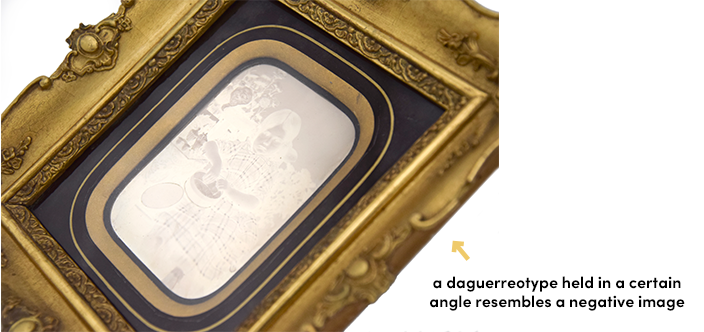Exceptional case: the daguerreotype
You have a daguerreotype in your possession. This is a very rare photographic carrier! The oldest daguerreotypes date from 1837, when Louis Daguerre conceived a procedure for capturing an image on a silver-plated copper sheet.





